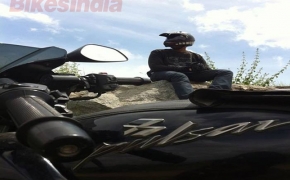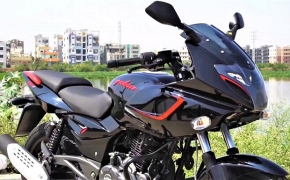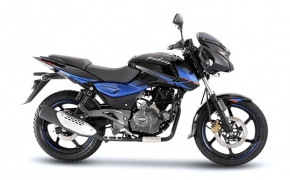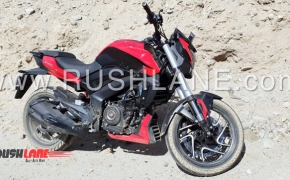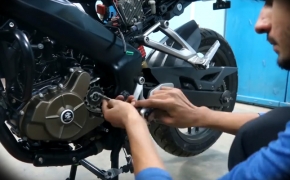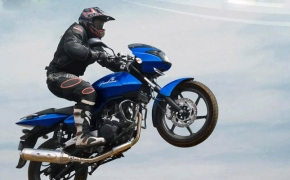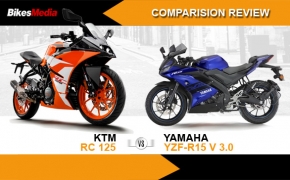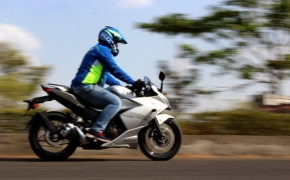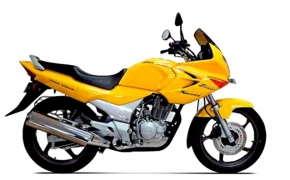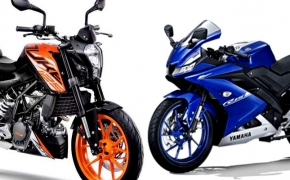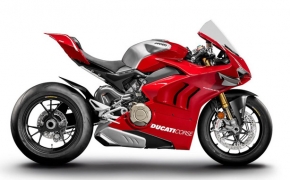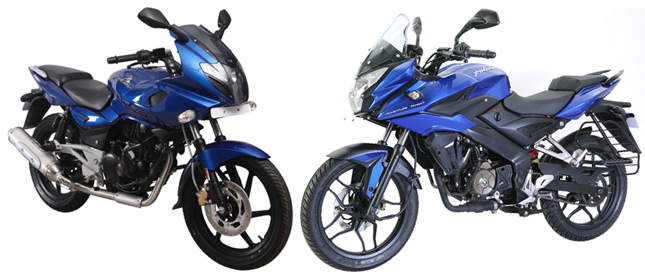 When an Indian plans for buying a bike, there’s one brand that comes for sure in his mind, yes, that is Pulsar. The Pulsars have come in many avatars and would be coming up in many different specifications and purpose oriented design cues in future too. Now, Bajaj has made the task of choosing a Pulsar a wee bit more difficult by launching the AS200 and the RS200.
When an Indian plans for buying a bike, there’s one brand that comes for sure in his mind, yes, that is Pulsar. The Pulsars have come in many avatars and would be coming up in many different specifications and purpose oriented design cues in future too. Now, Bajaj has made the task of choosing a Pulsar a wee bit more difficult by launching the AS200 and the RS200.So now, we have taken up the task to make your decision wiser while opting out for the better Pulsar. Yes, you guessed it right the fight is between 2 family members, the younger, powerful, yet agile Pulsar 200AS and the bike of its own era the Pulsar 220F dtsi.
Looks & Design:
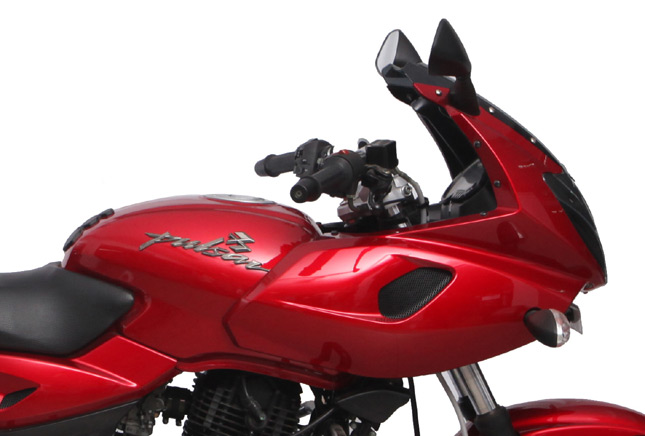 Talking about the looks, both the bikes have their very own presence on road. The AS looks a complete adventure motorcycle while the later looks as an old Indian sports bike. AS looks fresh with curves and muscular panels all around, the fairing mod is also done in a neat and subtle way. The beefy steel canister exhaust of the P220 may rob your heart against the underbelly exhaust of the AS200. The new headlamps with projector light in the AS200 gives the bike a look of its purpose while those on the P220 have started showing its age.
Talking about the looks, both the bikes have their very own presence on road. The AS looks a complete adventure motorcycle while the later looks as an old Indian sports bike. AS looks fresh with curves and muscular panels all around, the fairing mod is also done in a neat and subtle way. The beefy steel canister exhaust of the P220 may rob your heart against the underbelly exhaust of the AS200. The new headlamps with projector light in the AS200 gives the bike a look of its purpose while those on the P220 have started showing its age.The fuel tank of AS200 is almost same as of 200NS with plastic job done over it, while the P220 lives up with its own pulsarian fuel tank. There are few more bits like the muscular twin spar perimeter frame, tank guard, and brushed aluminum finished radiator housing, new stylish rear-view mirrors and the matte black plastic everywhere on the AS200 makes the bike look more attractive than the age old P220.
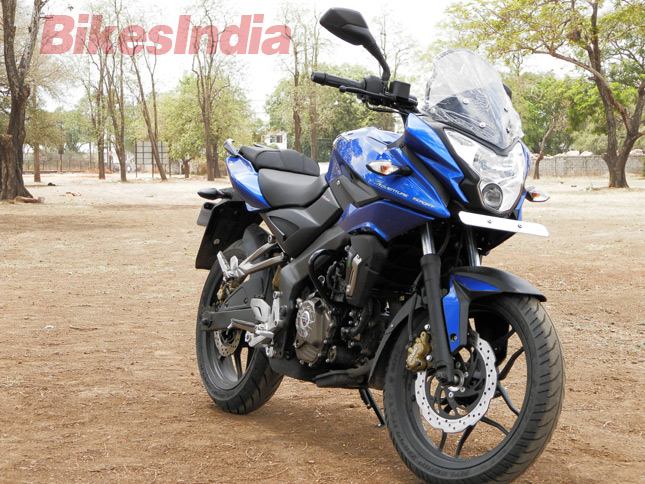 The alloys, 10 spokes alloys with new designs are pretty impressive than the basic 6-spoke wheels on the P220f. The foot pegs for the pillion riders are now connected to the chassis in the AS200. The last but the most noticed difference is the rear shock-absorbers the newer Pulsar comes with a single monoshock. Though Bajaj could've done with spoke wheels, on-offroad tyres and a little more suspension travel to strengthen the basic ingredients of a typical adventure bike, but still its a treat for those waiting to own a sub 250cc adventure motorcycle in India.
The alloys, 10 spokes alloys with new designs are pretty impressive than the basic 6-spoke wheels on the P220f. The foot pegs for the pillion riders are now connected to the chassis in the AS200. The last but the most noticed difference is the rear shock-absorbers the newer Pulsar comes with a single monoshock. Though Bajaj could've done with spoke wheels, on-offroad tyres and a little more suspension travel to strengthen the basic ingredients of a typical adventure bike, but still its a treat for those waiting to own a sub 250cc adventure motorcycle in India.But then choosing the plain yet affordable Indian sportsbike design of the P220 or the young, muscular and adventurous design of the AS200 is the personal decision of the buyer, but AS200 takes away a thumbs up from our side.
Engine, Performance & Gearbox:
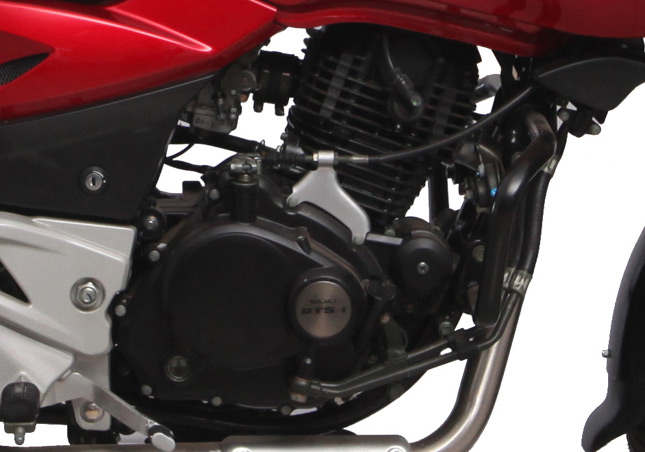 AS200 sports the same engine as the NS200, the liquid-cooled unit churning out 23.5 Ps of max. power and 18.3 Nm of max torque at 9500 and 8000 RPM respectively, while the P200 vomits out only 21.05 Ps of max. power and 19.12 NM of max torque at 8500 and 7000 RPM respectively. The later might look much tastier of the duo due to the power and torque they generate at their respective rpm figures, but then the next and most important consideration is the number of gears and the power band. The AS200 with 6 gears and much stronger and wider power band wins on the side of performance against a 5-speed gearbox of the P220.
AS200 sports the same engine as the NS200, the liquid-cooled unit churning out 23.5 Ps of max. power and 18.3 Nm of max torque at 9500 and 8000 RPM respectively, while the P200 vomits out only 21.05 Ps of max. power and 19.12 NM of max torque at 8500 and 7000 RPM respectively. The later might look much tastier of the duo due to the power and torque they generate at their respective rpm figures, but then the next and most important consideration is the number of gears and the power band. The AS200 with 6 gears and much stronger and wider power band wins on the side of performance against a 5-speed gearbox of the P220.The AS has got a strong mid range too, which helps it to accelerate quicker than the P220. The liquid-cooled unit on the AS200 is a triple spark one and thus offers a much more relaxed triple digit cruising with a better package of NVH levels.
Instruments and Electrical:
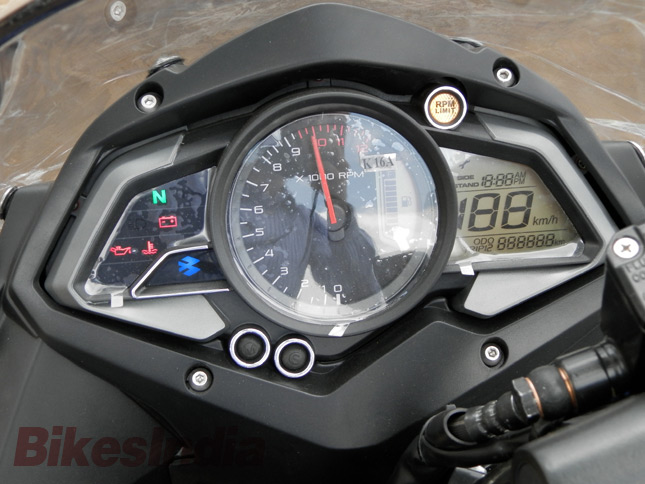 It is logical that the AS200 being the newer member of the Pulsar family would have much better instruments on the offer than the older member. The P220 has a sleek and simple instrument which was mix of a digital layout and an analog tachometer, and then its same with the AS200, but the later is more pleasingly attractive and comes loaded with a low battery, low oil pressure, coolant temperature indications and a clock on the go, which makes it a much more better companion on the tour than the P220. There aren’t any much difference on the electronic equipment list of the two. The AS200 does have much more accurate and better quality instruments on offer than its older faired sibling.
It is logical that the AS200 being the newer member of the Pulsar family would have much better instruments on the offer than the older member. The P220 has a sleek and simple instrument which was mix of a digital layout and an analog tachometer, and then its same with the AS200, but the later is more pleasingly attractive and comes loaded with a low battery, low oil pressure, coolant temperature indications and a clock on the go, which makes it a much more better companion on the tour than the P220. There aren’t any much difference on the electronic equipment list of the two. The AS200 does have much more accurate and better quality instruments on offer than its older faired sibling.Handling, Braking and Ergonomics:
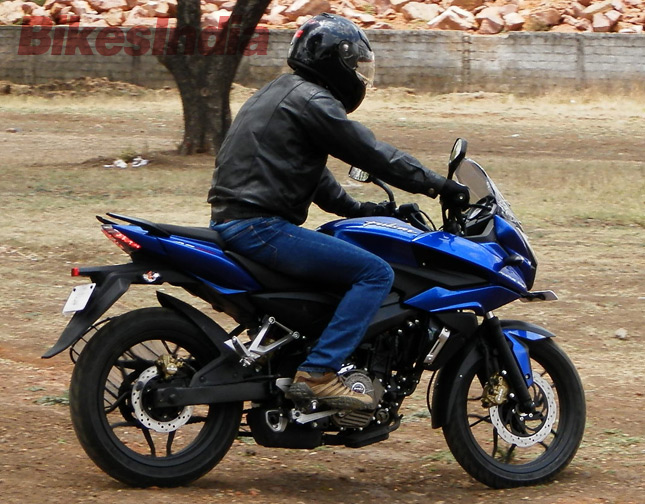 This is the department where AS200 rises up as a potential and tough competitor to P220. Being an adventure bike the AS200 doesn’t show reluctance, showing off the racing line to the P220 in a much better way. Yes, you can do knee drag on the AS200 with the same ease as on the NS200. Talking about handling, it has got newer suspension set-up upfront and rear on the AS200 and it undulates the bumps pretty well and feels much more alive than the P220. The AS200 is nimble, agile yet stable in both high-speeds and city speed runs due to its new perimeter chassis and larger wheelbase with a superior combination of suspension setup.
This is the department where AS200 rises up as a potential and tough competitor to P220. Being an adventure bike the AS200 doesn’t show reluctance, showing off the racing line to the P220 in a much better way. Yes, you can do knee drag on the AS200 with the same ease as on the NS200. Talking about handling, it has got newer suspension set-up upfront and rear on the AS200 and it undulates the bumps pretty well and feels much more alive than the P220. The AS200 is nimble, agile yet stable in both high-speeds and city speed runs due to its new perimeter chassis and larger wheelbase with a superior combination of suspension setup.
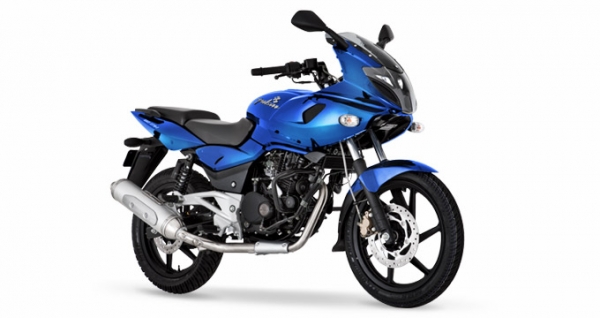 Though both the bikes feel a bit heavy in the stop-go traffic and are not at all a boon for short riders due to their higher saddle. When coming to ergonomics both the bikes share different lean angles. The seating on the AS200 is pretty straight as the NS200 while you have to lean over the clip-ons on the P220. The AS200 is particularly a tourer and P220 was introduced to the market as a sports bike. The seat are comfortable on both the bikes but the AS200 is much more comfortable and interesting to ride on longer runs due its relatively straight riding posture.
Though both the bikes feel a bit heavy in the stop-go traffic and are not at all a boon for short riders due to their higher saddle. When coming to ergonomics both the bikes share different lean angles. The seating on the AS200 is pretty straight as the NS200 while you have to lean over the clip-ons on the P220. The AS200 is particularly a tourer and P220 was introduced to the market as a sports bike. The seat are comfortable on both the bikes but the AS200 is much more comfortable and interesting to ride on longer runs due its relatively straight riding posture. Now the AS200 comes out of the line with MRF rubber leaving the old non-sticky Eurogrips. The brakes are better on the AS200, the feedback is good from the petal disc brakes, though P220 doesn’t hesitate to show-off its dual-disc setup either. The ABS isn’t available even as an option on both the bikes.
Verdict:
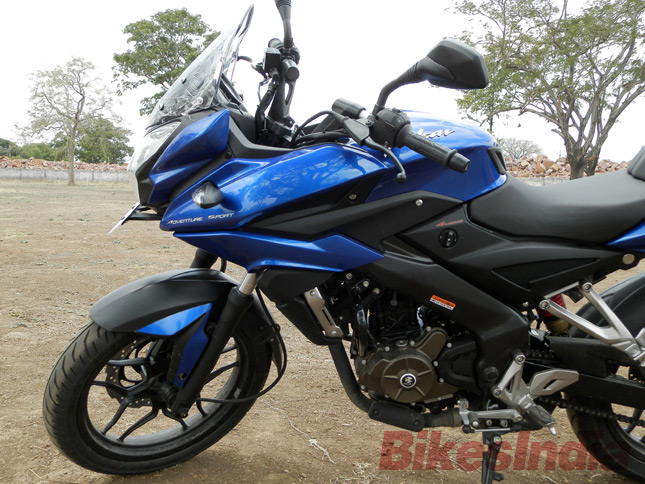 It is legend vs legend, Bajaj vs Bajaj, faired vs faired but adventure vs sports. So it is totally up to the choice of the customer what does he want, but when it comes to our choice out of the two, it is Bajaj Pulsar 200AS. Paying some extra 20k INR (according to on-road prices of the two in Delhi) you end up buying a newer, well proportioned, beautiful, much refined, sportier, practical and agile yet comfortable bike of the duo, therefore this doesn’t sound as a bad deal at all.
It is legend vs legend, Bajaj vs Bajaj, faired vs faired but adventure vs sports. So it is totally up to the choice of the customer what does he want, but when it comes to our choice out of the two, it is Bajaj Pulsar 200AS. Paying some extra 20k INR (according to on-road prices of the two in Delhi) you end up buying a newer, well proportioned, beautiful, much refined, sportier, practical and agile yet comfortable bike of the duo, therefore this doesn’t sound as a bad deal at all.By: Mohit Bhardwaj












